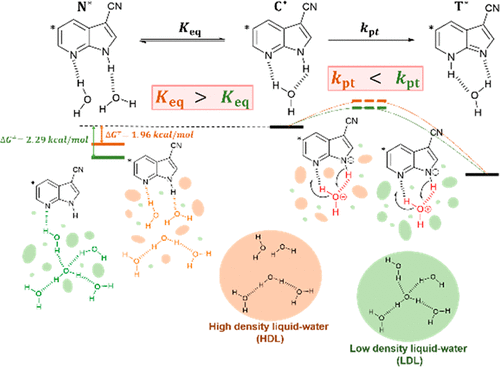Featured Scientist

Author published in"Journal of PhysicJournal al Chemistry Letters"affiliate to
College of Science and Engineering
Hsiao-Ching Yang
Department of Chemistry,
Fu Jen Catholic University, New Taipei City, Taiwan 。
Article published in
"Journal of Physical Chemistry Letters"2020,11,21,9468–9475
Could Chemical Reaction at the Molecular Level Show Distinction between Two Liquid-Water States? Study of the Excited-State Water-Catalyzed Proton Transfer Reaction Provides a Clue
The two liquid-water states, which lead to some anomalies when temperature crosses over 50 ± 10 °C at the atmospheric pressure, have been continuously catching popular attention. In this study, using the excited-state proton transfer (ESPT) catalyzed by water molecules as a prototypical reaction, we demonstrate that the kinetics of ESPT indeed is influenced by the two liquid-water states. In the water-catalyzed ESPT of 3-cyano-7-azaindole (3CAI), a repetitive and comprehensive temperature-dependent study of ESPT in H2O from 0 to 90 °C shows anomalous behavior. The plot of the logarithm of ESPT rate constant as a function of inverse of absolute temperature deviates from a straight line. The convex-Arrhenius behavior manifests the activation free energy for water-assisted ESPT being dependent on temperature and hence the liquid water structure. To simplify the discussion, the plot is well fitted by using two straight lines that are crossed over in the vicinity of 40 °C. The free energy difference between water-solvated 3CAI and the 1:1 H2O:3CAI complex is deduced to be 2.29 ± 0.04 and 1.96 ± 0.04 kcal·mol–1 in the regions of 0–40 and 40–90 °C water, respectively, which also results in different frequency factors, i.e., the proton transfer/tunneling rates of (5.83 ± 0.36) × 1010 and (3.48 ± 0.27) × 1010 s–1, respectively. In a qualitative manner, the results are then rationalized by the different types of H-bonding configuration as proposed for two liquid-water phases, rendering experimental evidence to support the different water phases in ambient temperatures at 1 bar. [Full article]

59 views